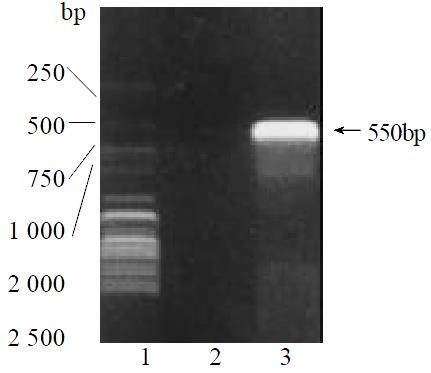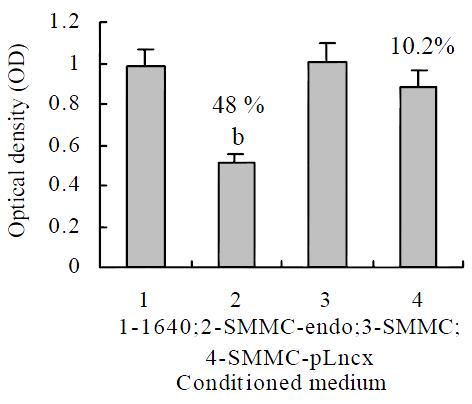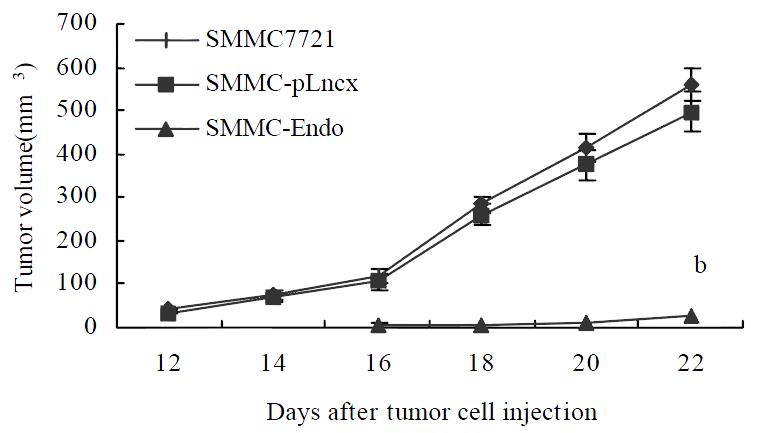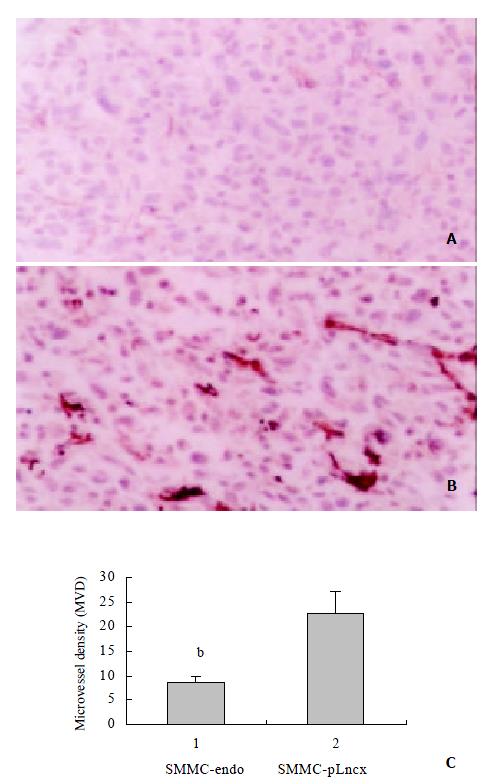Copyright
©The Author(s) 2002.
World J Gastroenterol. Dec 15, 2002; 8(6): 1045-1049
Published online Dec 15, 2002. doi: 10.3748/wjg.v8.i6.1045
Published online Dec 15, 2002. doi: 10.3748/wjg.v8.i6.1045
Figure 1 Analysis of PCR product of endostatin-transfected SMMC7721 cells by 1% agarose gel electrophoresis.
1: DNA Marker. 2: PCR product of SMMC-pLncx. 3: PCR product of SMMC-endo.
Figure 2 SDS-PAGE analysis and Western blot of endostatin expressed in supernatant of virally transduced SMMC7721cells (A) SDS-PAGE analysis; 1, supernatant of control SMMC-pLncx cells; 2, supernatant of endostatin-transfected SMMC-endo cells; 3, protein marker; (B) Western blot analysis; 1 protein marker; 2, supernatant of endostatin-transfected SMMC-endo cells.
Figure 3 Inhibition of endothelial cell proliferation by condi-tioned medium from SMMC-endo cells.
Conditioned medium from SMMC-endo (2), SMMC7721 (3) and SMMC-pLncx (4) were concentrated and applied to HUVEC cells grown in 40-well plate. Three days later, cell number, as measured by absorbance(OD), was then quantified by using a colorimetric MTT assay. Bars, SD. bP<0.01, compared with conditioned medium from control SMMC-pLncx.
Figure 4 Inhibition on the growth of human liver carcinoma implanted in nude mice by human endostatin.
bP < 0.001, SMMC-endo compared with control SMMC-pLncx.
Figure 5 Tumor sections were stained with an antibody reac-tive to CD34.
A: Tumor section from endostatin-transfected g1roup showed only a few positively stained vascular endothelial cells. B: Similar section of the control group showed highly vasuclarized tumor tissue. C: Microvessel density (MVD) was quantified by counting of positively stained endothelial cells from 5 fields in each tumor section. Bars, SD. bP < 0.01, compared with control SMMC-pLncx. × 200.
- Citation: Wang X, Liu FK, Li X, Li JS, Xu GX. Retrovirus-mediated gene transfer of human endostatin inhibits growth of human liver carcinoma cells SMMC7721 in nude mice. World J Gastroenterol 2002; 8(6): 1045-1049
- URL: https://www.wjgnet.com/1007-9327/full/v8/i6/1045.htm
- DOI: https://dx.doi.org/10.3748/wjg.v8.i6.1045













